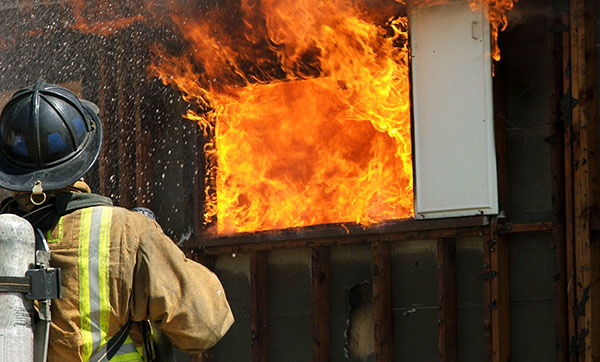Firestopping Materials & Their Importance
When escaping a fire, especially in a high-rise building, time is of the essence. Effective firestopping materials can help maximize the time available for safe evacuation. An article in The Construction Specifier titled “Firestopping Materials: Why All Components Matter” discusses the importance of these materials and the need for thorough testing as systems.

The Importance of Time
Fire spreads quickly, and every minute that firestopping materials can contain it gives occupants more time to escape. This delay also allows firefighters crucial time to rescue anyone trapped and strategize their response.
Perimeter fire containment (PFC) systems consist of various firestopping materials that must meet specific standards. U.S. building codes require these materials to be tested according to ASTM E2307 to ensure effective fire resistance.
The author also notes that the effectiveness of PFC systems is a double-edged sword. It protects lives and property, which is critical, but its success in doing so may be creating “a sense of complacency” due to the lack of catastrophic fires in high-rise buildings in recent years.
Protecting the Perimeter
Architects, engineers, and construction workers play key roles in ensuring fire protection by specifying and correctly installing “tested and listed” firestopping systems. The ASTM E2307 standard ensures that these systems can withstand extreme testing conditions and provide reliable fire protection.
A PFC system typically includes:
- Mineral wool insulation
- Hangers
- Mullion covers
- Backer/reinforcement support
- Firestop sealants or sprays
- These components work together to protect the building’s perimeter.
The Role of Mineral Wool and System Testing
An important takeaway is that firestopping materials must be tested together as part of the PFC system. If one tested component is replaced with a different, untested material, the entire system must be retested.
For example, mineral wool can withstand high temperatures and flames while maintaining integrity. However, using an untested substitute could compromise the system's efficiency, prompting the need for complete retesting.
Sometimes, other desirable properties of mineral wool, such as sound reduction and water resistance, may lead to the use of different products. This can unintentionally affect fire protection capabilities.
Risks of Component-Based Testing
While some manufacturers are advocating for component-based testing, the author argues that it’s less effective than system testing. Component testing might overlook critical interactions, like whether the mineral wool can maintain structural integrity under extreme conditions.
Prioritizing Safety
System-based testing examines how all components work together, ensuring firestopping systems effectively protect lives. Given the stakes involved during a fire, it’s essential not to cut corners.
While system testing may be more complex, it is crucial for ensuring that PFCs perform effectively when it matters most.
We encourage you to read the full article here and learn why using perimeter fire containment systems for high-rise construction tested by authorities like Underwriters Laboratories (UL) is critically important.